Things are moving quickly down in Mallacoota. Mark The Russian has turned over his whole line-up in less than five years. His previous beastie — the Bad Boy — is now considered a “family boat” and his new plaything is capable of a lazy 84mph. Blink and you’ll miss it! Cootacraft is one of Australia’s great boat-building success stories.
How time flies. It feels like only yesterday that the The Captain touched down with the all new Cootacraft Bad Boy. At the time, we rated it the sexiest saltwater sled in town, with an aggressive set of numbers to match: 22.5ft (6.9m) long with an 8ft (2.4m) beam and 24-degree deadrise. This instant classic leapt off the cover of issue #4 of The Captain. It was also the pride of the Cootacraft fleet, the biggest dog in a line-up that included the Little Ram, Gabo Express, Gun Shot and Coldfront. These days, the former hero model is just one in the herd of thoroughbreds created in the Cootacraft “factory” — a shed on a dusty side street in the back blocks of Mallacoota. The concrete parking lot out front resembles a scaled-down Thunderbird Row, each deep-vee hull protruding further than the one before it, competing for our adoration.
Builder Mark “The Russian” doesn’t go out of his way to attract attention. If you need a hint, the place is surrounded by a high steel fence with a pissoff grade padlock on the gate. A large posse of mongrel dogs roams the yard. But we’ve caught him in a good mood and he’s keen to show us his fresh glassware. Passing the man a beer, we pop the obvious question, “Why did you turn over your whole fleet in five years?” “Everyone wants to travel further and faster,” Mark says. “They need more fuel and want a softer ride.” Then he ushers us along the row of freshly minted Cootacraft vessels.
BAD BOY BITCOIN
The Bad Boy has been in production for almost four years and there are more than 20 of the beasts dotted around the Australian coast. “The first Bad Boy recently got resold,” Mark says. “The customer made $40,000 in four years. He upgraded to a Chief.” This ain’t news to The Captain, who has been telling Mrs Captain that boats are better than Bitcoin for years now. “So, where does the Bad Boy sit given your new range of bigger and faster models?” he asks The Russian. “It’s for bread-and-butter family people with three or four kids, but mainly fishermen. They’re a good all-round hull.”
“During what strange alignment of the planets did a 22.5ft, 24-degree deadrise beast become a family boat?” asks The Captain, spluttering on his Corona. “People love that soft-riding hull and the Bad Boy is quite beamy,” Mark says, flashing what could be called — by braver blokes than us — a shit-eating grin. “It’s stable, it’s got big reverse chines, it’s just a gorgeous boat all around.”
The Bad Boy will currently set you back about $130,000 with a Savage trailer and 300HP Yamaha or Mercury 300 Pro XS. The BMT weight with 505L of fuel is 2850kg. There was a time when the Bad Boy moulds and their construction were outsourced, but that’s all over now, baby blue. The moulds are back in Mallacoota and if you want one built by Mark, you better bring the folding stuff because he’s only fulfilling 10 more orders, which will take him two years.
PLAYING THE VILLAIN
The next step up in the Cootacraft range is the 23ft (7.2m) Villain. Designed for spearos it resembles, er, a spear, with a 2.1m (6.9ft) beam – a foot narrower than the Bad Boy. Marks says he’s been running his own Villain for three years, using it for game and spearfishing. “It ticks all the boxes, but it’s not as stable as the Bad Boy because of the 7ft beam. With a 24-degree deadrise, she will rock a bit at rest.
This is a spearfishing hull only — go there, go fast, come back home fast, nice and soft, dry, a beautiful hull.” Mark says the hull was originally designed in 1969 by Don Aronow for Dr Bob Magoon in the USA. “He won a few races in it and it’s been reproduced in America by 11 different manufacturers.
We brought one to Australia — changed the top and a bit on the bottom, made it softer, and the top decks a little higher with more freeboard. There’s more cabin space, a bigger wavebreaker with a lip — she came up pretty good. After this model first came out in the US, they went bigger, bigger and then bigger again. At the end of the day, this is probably the beginning of Magnum hulls.” “Any sales to the motherland?” we ask. “We sold one to a spearfisherman in California,” Mark says. “He’s wrapped, reckons the build quality is better than in the US.”
ALL HAIL THE CHIEF
Mark is big fan of the Formula 233 hull. He’s had two and worked as a deckhand on a few more. “I was in love with the 233 Edencraft, but I always wanted something a little bit longer. I’d been in discussion with Norman Collins from Whitewater boats for the past eight years to purchase that particular mould,” he says, pointing to the Chief. “This is the original 25ft Whitewater mould, which is a bluewater classic in the US. I said to Norman, ‘Let’s make a deal over the phone, right now!’ He goes, ‘Mark, you’ve been talking to me for the past eight years, so OK, let’s make a deal’. We purchased that mould over the phone.”
Taking time out to suck on a cigarette, Mark continues the saga.“We bought the bottom mould, the top cap for the console hull and a centre console. We didn’t take the liner because I don’t like them.” Now to the untrained eye, the blue Chief called Avalon Jack III — owned by local ab diver Cam Armstrong — looks every bit a Formula 233. So we ask Mark to explain the difference.
“The major difference is Whitewater took the rocker out of the 233, extended it two feet and took the auto trim tabs out of it,” he says. There’s nothing wrong with the 233, it’s still a gorgeous boat that’s been replicated many times over the years, but what we’ve done with it makes it run a little better.” We notice The Chief is the only mould in the fleet sporting a pod constructed of halfinch aluminium. “The way the Whitewater ran back in the US with a 760mm pod, we duplicated that here,” Mark explains. “We can raise the engines that little bit higher and still have a lot of water pressure. The hull behaves itself a lot nicer and the gearboxes run in fresher water than transom-mounted.
It’s offset, so we can run the engines a lot higher than running a full hull extension. The only thing we’ve added are the swim platforms so you can walk right around it.” Marks reckons everyone loves the Chief, which comes in a centre console, runabout or hardtop configuration and can operate as a workboat, game boat or spearfishing boat. “The top deck is cut and shut from the Boss, so the internals are identical,” Mark says. “It’s a metre longer and 200mm higher than the Bad Boy.
On the trailer, it weighs 3.3 to 3.4 tonne with 650L of fuel.” To keep the weight down, Mark prefers aluminium trailers, saving about 400kg compared to galvanised steel. Savage is his brand of choice.
TO POD OR NOT TO POD?
More than one boat builder The Captain knows has mentioned that pods are designed to fix problematic boats. The Russian doesn’t subscribe to this school of thought. “A lot of people miss the point,” he says. “You might say this boat’s no good because it’s porpoising or chine walking, but generally speaking, there’s nothing wrong with pods or hulls.
At the end of the day, it’s your rig-up — how you fit your engines, the props, what gearboxes you run, the weight of the pod and the weight distribution inside the hull. It’s where your fuel tanks and compressors are positioned.” So, where do people get it wrong? “The majority of people fit the engines too low, they also fit the wrong propellers — and weight distribution,” Mark says, adding that 90 per cent of Cootacrafts are fitted locally by himself and Roy Miller from RM Marine. The rest are fitted in Melbourne by Simon Isherwood from Race Marine.
1: The podded Chief with a pair of lightweight Suzuki 200HP motors.
2: Gotta love those classic lines.
LIKE A BOSS
Among all the shiny, svelte new hulls sits a dilapidated upturned 28ft bucket — the plug that spawned the Boss. It was formerly a 28ft Apache — an ex-drug runner from Miami, acquired at auction by Bob Saccenti, builder of Chief Powerboats and the founder of Apache Performance Boats. “It’s 28ft by 8ft by 24 degrees — perfect numbers,” Mark says. “We changed the hull bottom and made the bow-lifting and running strakes smaller to reduce the flat surface area, which makes the hull softer on impact. We made the chines wider towards the back and reversed it so it grips better around the corners if you’re doing 60–70mph.
We also put a little flare into it, although we probably didn’t need to. It’s a super-dry hull, the water hardly makes it up to the bow or rub rail.” The old plug looks ready for the scrap heap, with its MDF (timber particle board used to create the new hull shapes) swollen, and the bog and filler starting to crack, but it still arouses The Captain’s addictive project boat instincts. “Any chance of a project boat build here, Mark?” “Unfortunately, this one will be destroyed,” he says. Dream crushed.
On the opposite side of the driveway sits Mark’s personal boat — a fully finished Boss. As a side note, it seems every boat built these days was at some stage owned by its builder. The Captain suspects it’s a Don Aronow-inspired technique used to sprinkle extra sauce on the sale. Legend has it there are about 70 people on the water who think they have a boat Don Aronow built for himself and Mark is fast heading in the same direction. (Captain’s note: We hope he doesn’t meet the same fate. You can read about Don’s impressive feats in this issue.) This retro-inspired Boss is 8.6m long, 2.5m in the beam with a 24-degree deadrise. Sitting on a Savage trailer the package weighs 2860kg including the hull, trailer, engines and all the hydraulics and sounders. With 650L of fuel it’s about 3350kg. “We’ve done 65 hours on it,” Mark says. “Water testing with Mercury Racing MAX5 29-inch pitch props, the boat does 85.5mph.” At the business end sits a pair of naturally aspirated Mercury 4.6L V8 300Rs.
The motors feature two wing plates joined with a rear-mounted tie bar. Mark reckons it holds the engines a lot steadier than the front bar. They sit on a pair of Bob’s Machine super heavy duty manual jacking plates. This tricky kit gives the motors six inches of movement, depending on Mark’s mood. At the moment, he’s running a fishing set-up, but when he goes racing, the motors are raised 10mm so there’s less drag from the gearbox. He reckons the only thing in the water then is the skeg. “If you’re running in flat water you can jack it up that bit higher and get better performance and fuel efficiency.” At full noise, the prop shaft can sit 20mm above the bottom of the hull. Water pressure is achieved with a 5.5-inch offset from the hull bottom to the rear transom (think of it like a step-up). The jacking plates act like another offset, pushing the gearboxes a further 5.5 inches aft. If you want a Boss, better start saving.
The Mercury Racing 380SS trim tabs alone are worth around $10,000 fitted.“They’re mainly to keep us in the water when the stuff gets rough,” Mark explains. “We don’t use them much at all. Offshore, we use them in neutral position — same with the gearboxes and the driveshafts — and the hulls perform perfectly. If it gets rough and we have to go pretty hard around the bends, we drop them down a bit.” At the helm is a sweet set of Mercury zero-effort throttles. They feature forward and reverse gearsticks and a digitally controlled throttle. “When we’re running at high speeds, you can’t knock the throttle into reverse because both levers are forward,” Mark says. “All you’re doing is operating two throttles.”
STAND PROUD
Are boats supposed to land on their arse? No. Do we care? No. Does it fill up a magazine cover. Oath. Do you want to see it again? Thought so.
1. 07 ahoy! The 07 came about because Mark couldn’t remember his parter Mel’s birthday.
2. Special: The Coota crew keep watch.
3. Black Beauty: This Boss model features Mercury 4.6L V8 300HP Pro XS outboards and works as a commercial diving boat in southern waters.
SOME THINGS NEVER CHANGE
The old-school construction method for Mark’s boats hasn’t changed since 2004. It features a solid laminate from the chine, overlapping at the keel. The sides are cored for strength. “At the end of the day, I like to see where my air bubbles are,” he says, hinting there may be resin-infused hatches in the Cootacraft future. The second-hand prices of his boats tell the story. “We’re about quality in construction and longevity,” Mark says. “Every customer makes money on every hull.”
CHANGE IN THE AIR
Mark has tweaked a few other things down at Cootacraft. He now fits seats — Joel Ryan and Julian Coyne will be thrilled — and also Yamaha and Suzuki outboards as well as his beloved Mercurys. And he’s changed up his personal hobbies. Once a dedicated spearo, he’s now taken up game fishing and deep-dropping as well as becoming a big advocate for boat racing. When we asked what drives Mark to keep developing these machines rather than, say, taking up golf, The Captain was touched to see him reveal his softer side. “I’ve just got a passion for boats. I love them. I love spearing, I love game fishing and I love racing, which we do six times a year.
We’ve been racing pretty successfully for the past two years and from that we’ve learned a lot we can pass on to our customers. We know how to set up the engines, trailers, props, gearboxes — Mercury, Yamaha and Suzuki all have different gearboxes. With each hull, the set-up is going to be different — different propellers, heights, rakes, and so on.” “Win on Sunday, sell on Monday,” The Captain chimes in all-knowingly.” “Most of the time we win on Sunday and Saturday,” Mark retorts. “We haven’t stopped yet, either. This is just the beginning. It’ll grow bigger and bigger every year.” Convinced Mark is hinting at something new, we ask if he’ll be joining us in cat land. “It’s a secret,” he says, with a smile as wide as a Cheshire, er, cat. To be continued.



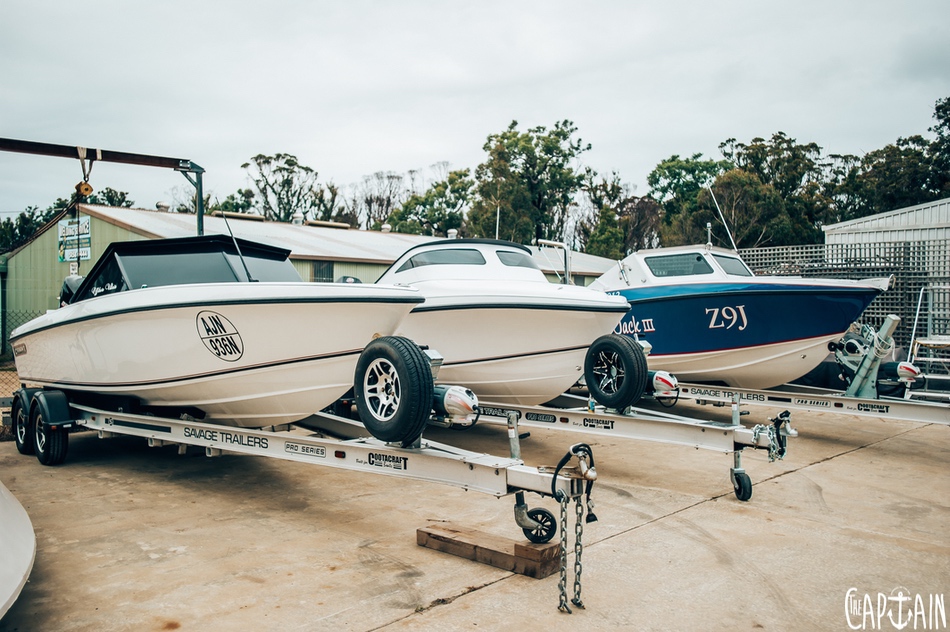





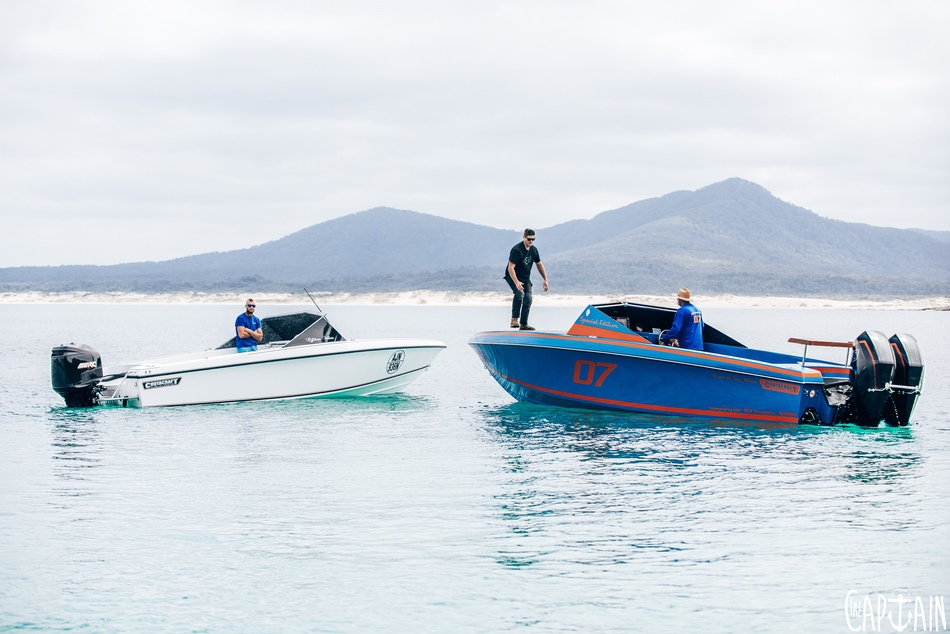


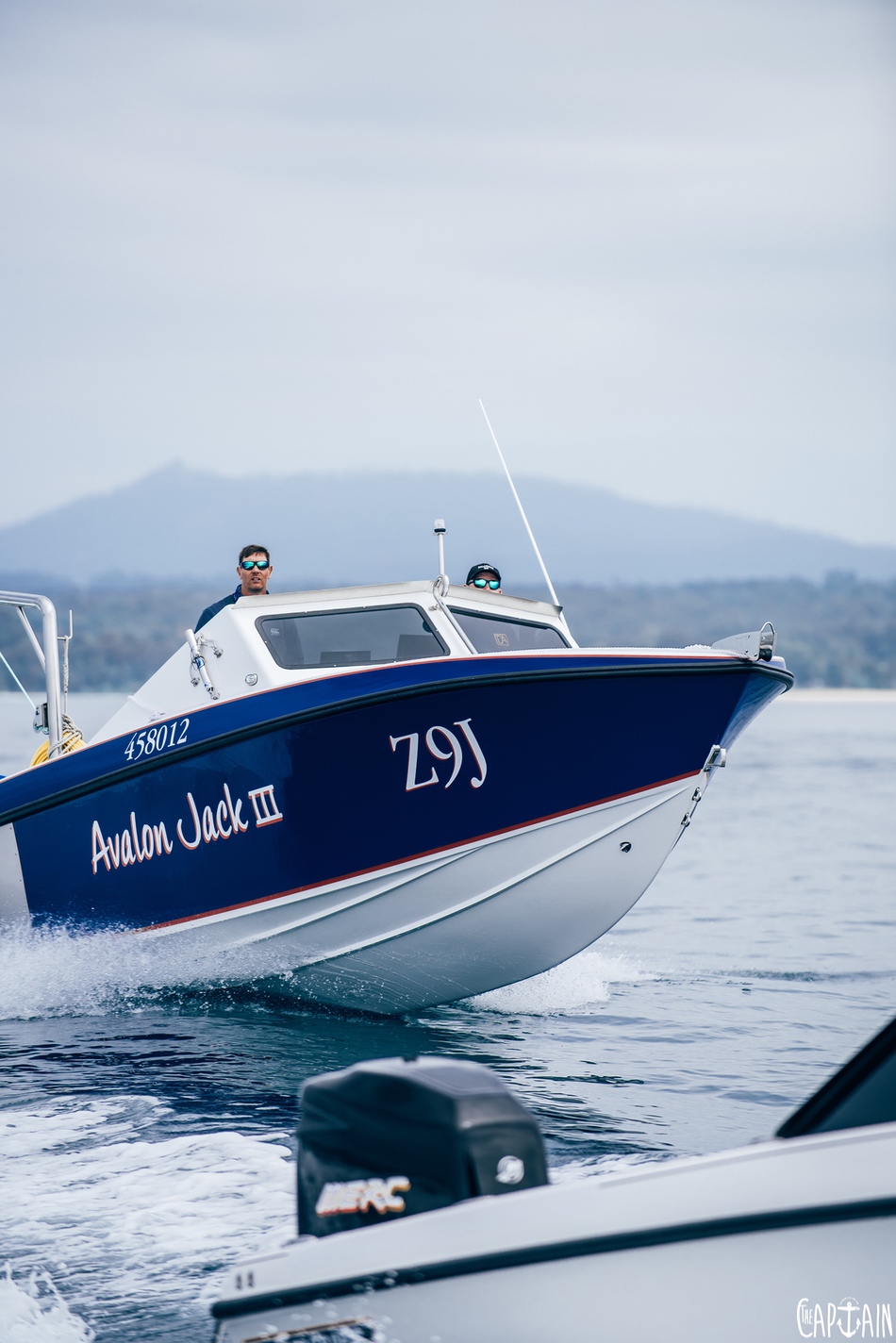











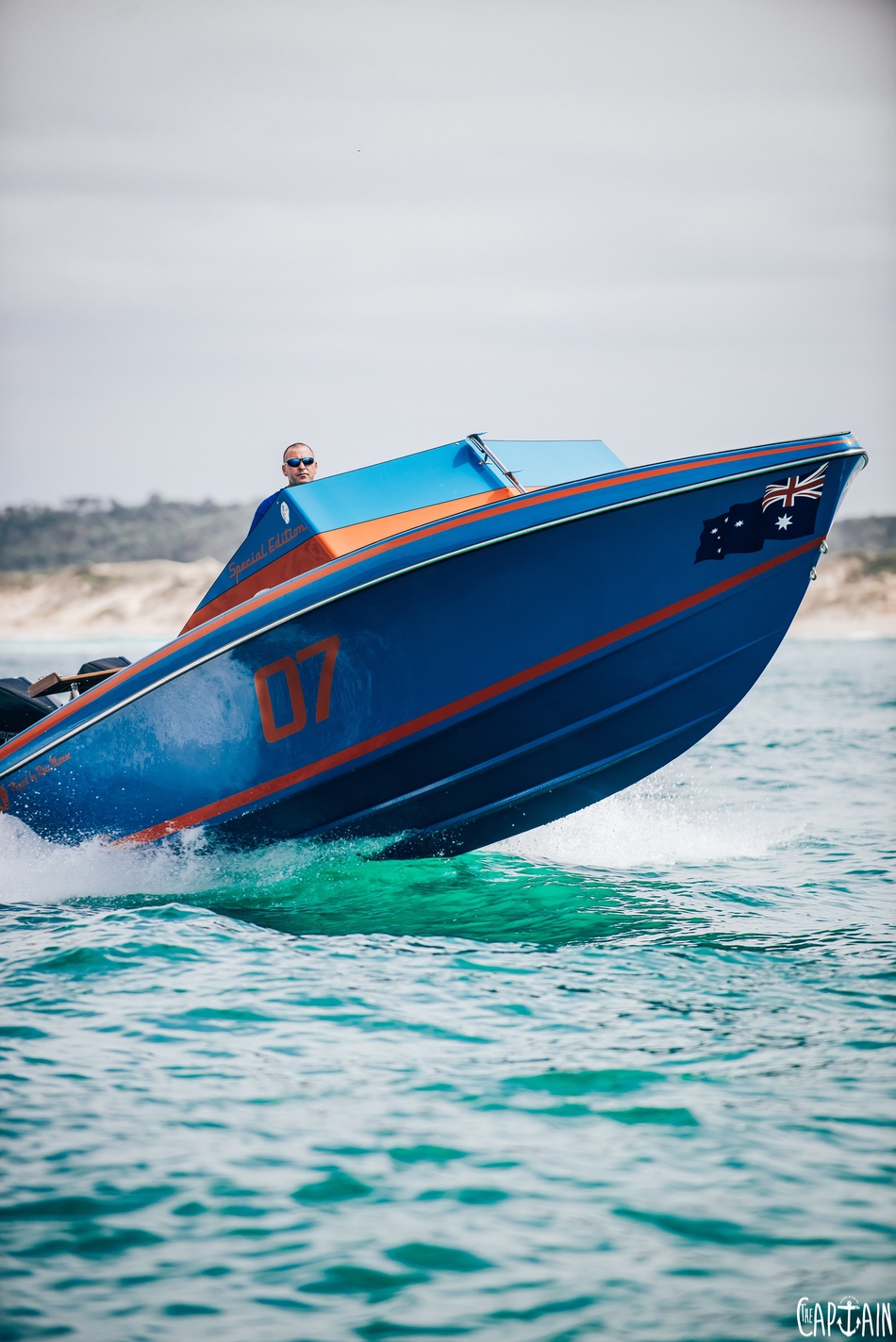









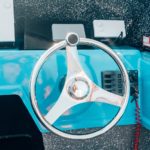





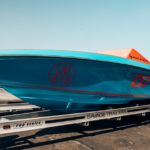


















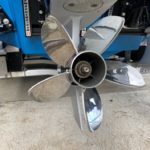







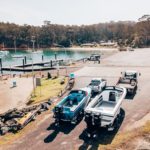












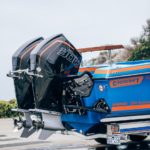











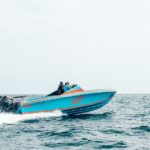








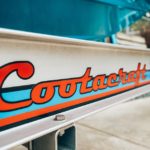


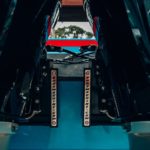

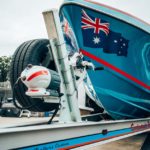





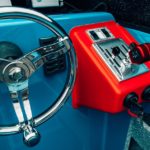
















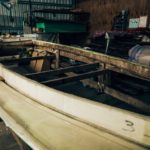



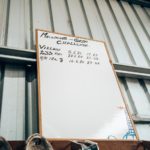



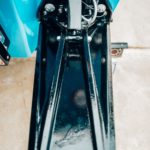





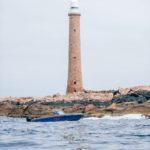



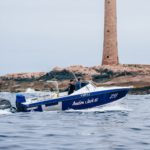
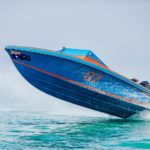









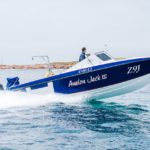

Recent Comments